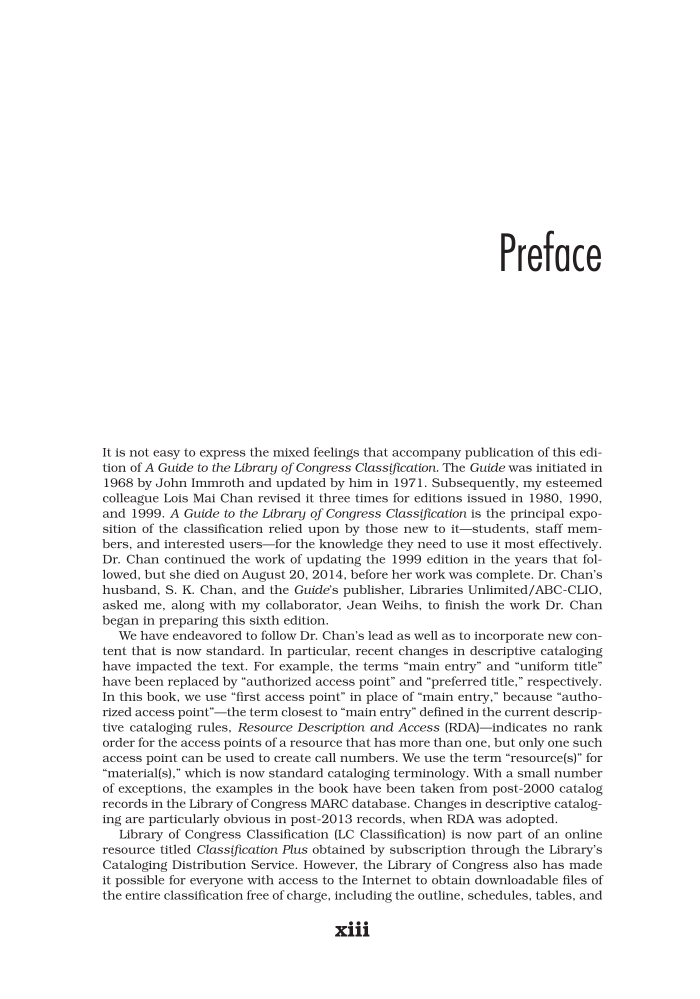xiii Preface It is not easy to express the mixed feelings that accompany publication of this edi- tion of A Guide to the Library of Congress Classification. The Guide was initiated in 1968 by John Immroth and updated by him in 1971. Subsequently, my esteemed colleague Lois Mai Chan revised it three times for editions issued in 1980, 1990, and 1999. A Guide to the Library of Congress Classification is the principal expo- sition of the classification relied upon by those new to it—students, staff mem- bers, and interested users—for the knowledge they need to use it most effectively. Dr. Chan continued the work of updating the 1999 edition in the years that fol- lowed, but she died on August 20, 2014, before her work was complete. Dr. Chan’s husband, S. K. Chan, and the Guide’s publisher, Libraries Unlimited/ABC-CLIO, asked me, along with my collaborator, Jean Weihs, to finish the work Dr. Chan began in preparing this sixth edition. We have endeavored to follow Dr. Chan’s lead as well as to incorporate new con- tent that is now standard. In particular, recent changes in descriptive cataloging have impacted the text. For example, the terms “main entry” and “uniform title” have been replaced by “authorized access point” and “preferred title,” respectively. In this book, we use “first access point” in place of “main entry,” because “autho- rized access point”—the term closest to “main entry” defined in the current descrip- tive cataloging rules, Resource Description and Access (RDA)—indicates no rank order for the access points of a resource that has more than one, but only one such access point can be used to create call numbers. We use the term “resource(s)” for “material(s),” which is now standard cataloging terminology. With a small number of exceptions, the examples in the book have been taken from post-2000 catalog records in the Library of Congress MARC database. Changes in descriptive catalog- ing are particularly obvious in post-2013 records, when RDA was adopted. Library of Congress Classification (LC Classification) is now part of an online resource titled Classification Plus obtained by subscription through the Library’s Cataloging Distribution Service. However, the Library of Congress also has made it possible for everyone with access to the Internet to obtain downloadable files of the entire classification free of charge, including the outline, schedules, tables, and
Document Details My Account Print multiple pages
Print
You have printed 0 times in the last 24 hours.
Your print count will reset on at .
You may print 0 more time(s) before then.
You may print a maximum of 0 pages at a time.






































































































































































































































































































































































































